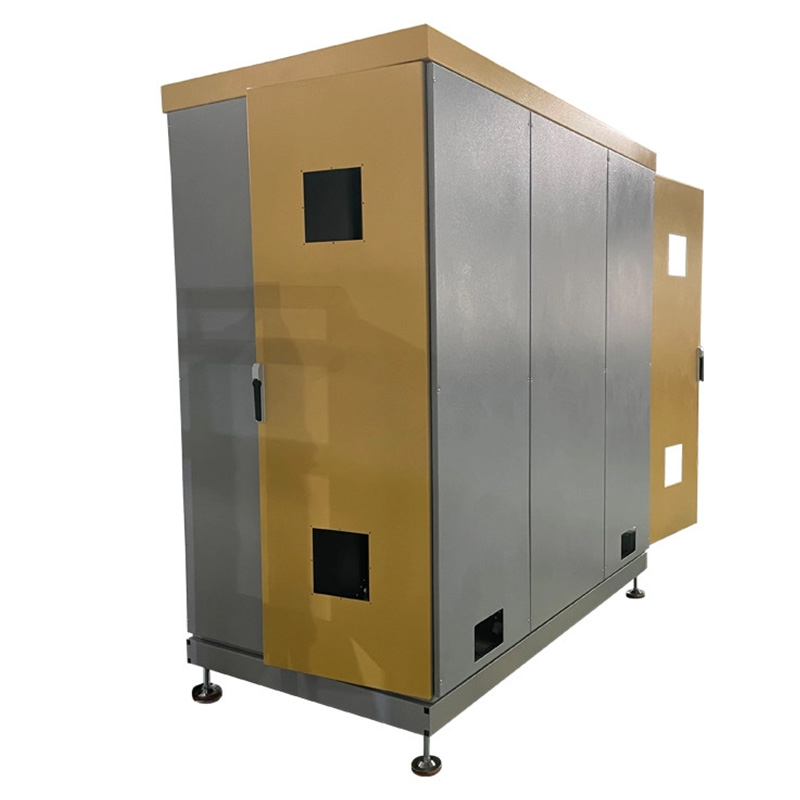Material Selection: Your First Defense Layer
Not all metals withstand real-world punishment. Choosing based solely on cost? That’s like wearing a paper raincoat in a monsoon. Sheet metal enclosures demand material-specific engineering. For chemical plants, stainless steel’s corrosion resistance prevents premature degradation. SPCC cold-rolled steel offers superior strength for automotive controls where impacts occur. Surprisingly, aluminum alloys like AL6061 provide 60% weight reduction for drone navigation systems—critical for aerospace applications. We specify material thickness (1.2mm-2.5mm) based on impact risk profiles. Pro tip: Coastal sites need 304-grade stainless steel to combat salt spray corrosion. Anything less flakes apart in 18 months.
Material Comparison Guide
| Material | Best For | Cost Impact | Limitations |
|---|---|---|---|
| Stainless Steel (304/316) | Chemical labs, marine | 40% higher | Weight challenges |
| Aluminum (AL5052/6061) | Avionics, drones | 25% premium | Lower impact resistance |
| SPCC Cold-Rolled Steel | Factory automation | Budget-friendly | Requires coating |
Data compiled from industrial testing by ACES Metal Fabrication
Structural Integrity: Beyond Basic Metal Bending
Flimsy enclosures cause 34% of vibration-related sensor failures (Industrial Automation Journal, 2024). Three-point latching systems—like those in Hoffman’s XD3 series—prevent warping in environments exceeding 120°C. Continuous welded seams eliminate dust/water ingress points that plague spot-welded units. For earthquake-prone regions, we integrate internal bracing that absorbs 15G lateral forces. Remember: your sheet metal enclosure requires corner gussets when housing >50kg equipment. Our 2025 robotics project proved this prevents seam separation during sudden stops.
Thermal Management: The Silent Killer
Overheating shreds electronics. Surprisingly, adding fans sometimes worsens problems by ingesting conductive dust. Passive cooling strategies work better for most sheet metal enclosures. We incorporate chimney vents (convection-driven) and thermally conductive pads transferring heat to the enclosure walls. Powder-coated interiors actually reduce radiant heat absorption by 18% compared to bare metal. Pro tip: Use copper mounting plates for high-wattage components—they dissipate heat 8x faster than steel.
Surface Protection That Lasts
Rust isn’t just ugly—it causes electrical shorts and structural weakness. Standard spray paints peel in chemical environments. We specify powder coating thicknesses: 60-80μm for indoor units, 80-120μm for outdoor sheet metal enclosures. For wastewater plants, e-coating provides superior corrosion resistance—surviving 1,000+ salt spray hours. Anodizing aluminum creates a ceramic shield against abrasion. Avoid cheap galvanization; inconsistent zinc layers create weak zones.
Smart Customization Without Cost Bloat
Bespoke doesn’t mean bankrupt. Modular features like Weidmüller’s Klippon system use pre-engineered gland plates, slashing 30% off custom jobs. For low-volume production, laser-cut slot patterns accommodate sensor repositioning without new tooling. Key cost savers: Design with standard bend radii (1x material thickness) and avoid under-1mm perforations that snap dies. Our golden rule? Only pay for custom features affecting functionality.
Cost vs. Longevity: The Real Math
Cheap enclosures cost 3x more over a decade. Calculate this: A $300 stainless steel sheet metal enclosure lasts 15+ years in harsh settings. Its $150 carbon steel counterpart needs replacement every 5 years plus two repaints ($200 each). Total “savings”? Negative $250. Add productivity losses during swaps—you’re bleeding cash. Global markets confirm: The sheet metal enclosure segment will hit $8.6 billion by 2028 as manufacturers prioritize lifecycle costs (MarketWatch, 2025).
Step-by-Step Specification Guide
- Audit Environmental Threats: List temperatures, chemicals, impacts, IP/IEC ratings
- Map Thermal Loads: Calculate total wattage dissipation needs
- Prioritize Access Points: Specify removable panels only where needed
- Select Materials Strategically: Use hybrid materials (e.g., aluminum body with steel doors)
- Validate Prototypes: Conduct salt spray/impact tests before full production
⚠️ Critical Misstep Alert:
Never skip gasket compatibility testing! Silicone seals fail below -40°C—use EPDM in freezers. Conversely, EPDM melts above 120°C where silicone excels. Mismatched gaskets cause 80% of “mystery” contamination failures.
Implementation Checklist
- ✅ Validated material thickness for impact zones
- ✅ IP54+ sealing at all access points
- ✅ Corrosion protection matching chemical exposure
- ✅ Thermal dissipation strategy verified
- ✅ No sharp edges on wire entry points
- ✅ UL/NEMA ratings documented
FAQs: Industrial Sheet Metal Enclosures
Q: How thick should sheet metal enclosures be for outdoor use?
A: 1.5mm minimum for aluminum, 1.2mm for stainless steel—add 0.3mm for coastal/marine environments.
Q: Can powder coating replace galvanization?
A: In corrosive settings, combine both: zinc plating THEN powder coating. This outperforms either alone by 200%.
Q: What IP rating stops concrete dust?
A: IP54 suffices for large particles; use IP65 if fine dust exists with water spray.
Q: How to cut sheet metal enclosure costs without sacrificing quality?
A: Standardize sizes, reduce custom bends, and use pre-finished materials avoiding secondary painting.







